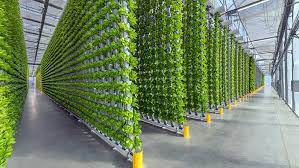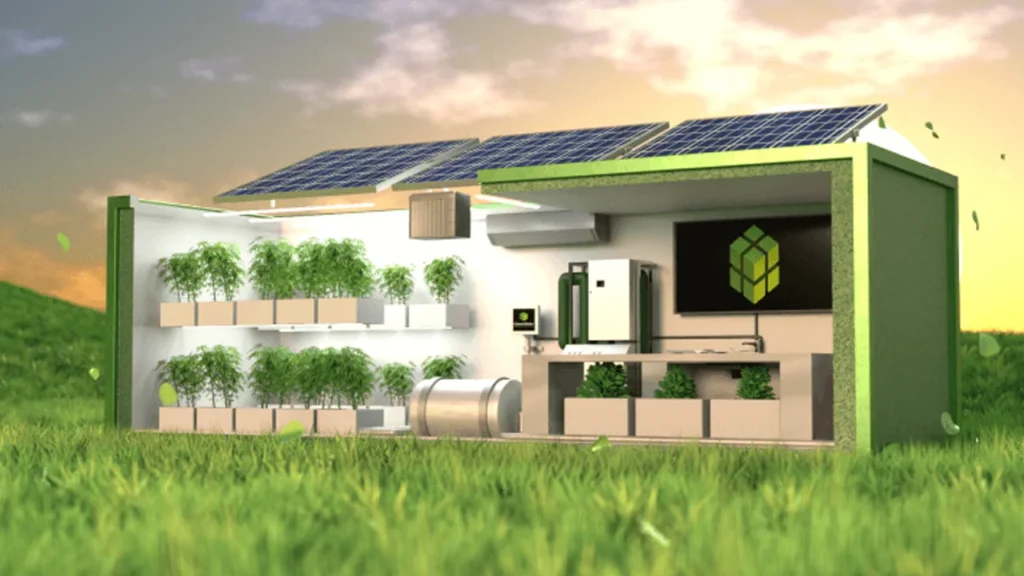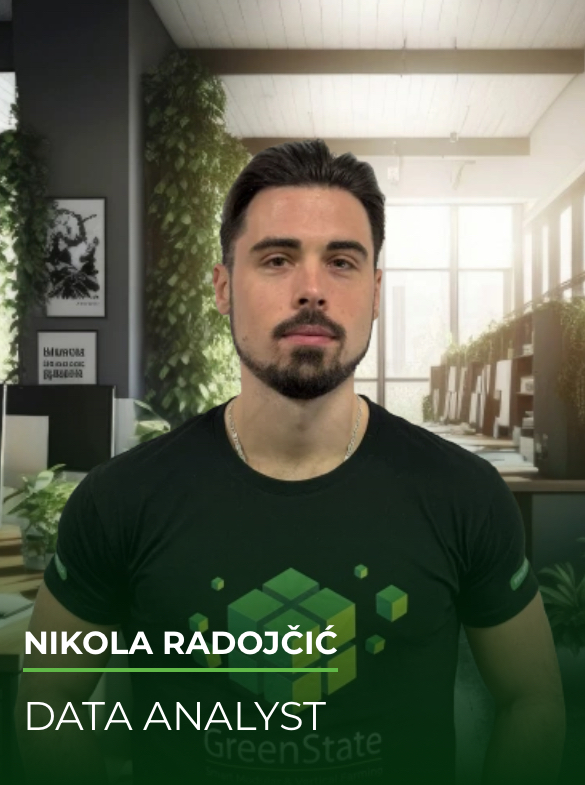Farming is an industry as old as the human race. It has, of course, developed over that time – but the basic model of cultivating land for food production has been a constant. Until now. Soon there will be 10 billion people on this planet – and they all need to be fed. Since our earth hasn‘t got infinite space for larger and larger fields, we need to think differently. We need, say the proponents of an exciting new form of farming, to start thinking vertically. In vertical farming, farmers are replaced by modern Ai algorithms and soil is replaced by nutrient water and sponges.
But what actually is vertical farming?
Vertical farming – as the name suggests, is a form of agriculture. But instead of huge, horizontal fields, it uses multi-storey buildings. In vertical farming, multiple layers of ”fields” are stacked on top of each other. The surface used stays the same, but the cultivable land increases by factor of 10 or even 100.
Who invented it?
Vertical farming may represent the cutting edge of modern agriculture, but it is not actually as new an invention as you might think. The first version of vertical farming was in the hanging gardens of Babylon. This may seem strange, but in technical terms, it’s the same concept. The first time the phrase “vertical farming“ was used was 1915, in Gilber Ellis Bailey’s book of that title. Shortly after that, Dickson Despommier presented the first practical concept, called the Despommier’s Skyscraper. The main advantage in his eyes was the extremely low water and energy waste.
But if it’s so great, why don’t we see vertical farms everywhere?
There’s more than one answer to that, but the main reason is money. Like in every other industry, evolution is driven by money and obviously vertical farms are whey more expensive to build than regular fields.
Generally speaking, there are two main types of vertical farms, the “recycled“ ones and the “new“ ones.
Recycled vertical farms are found in old factories, unused containers and even in mineshafts – basically in any building with unused space. This means that the biggest cost – construction – falls away. Unfortunately, however, there isn’t normally much unused space available. That means it’s not scalable. Which brings us back to our main problem: producing the sheer quantity of food required to feed 10 billion people.
That means that new, higher and bigger buildings need to be built– which creates much higher costs An alternative solution is clearly required – one that’s scalable but not too expensive to build.
How exactly does Vertical farming work?
Although there are multiple planting layers of “fields“ on top of each other, soil itself is largely a thing of the past in vertical farming, In most cases, the plants grow on sponges and get nourished by artificially added nutrients in the water. Because of the strong LEDs and the optimal temperature, vertical farming is able to harvest a great deal more than traditional farming and only uses 10% of the water. But it‘s of course also more energy intensive.
Vertical farming offers a huge contrast between nature and technology. Ai Robots and steel containers produce green lettuces. Or as, Nikola Radojcic, an expert at Greenstate told me: “Technology is at the heart of vertical farming, driving efficiency, sustainability, and innovation, but the plants themselves are what really matter.“
What does Greenstate do differently?
Greenstate is a small Swiss startup, which made it its mission to revolutionize the way we do farming today. They have hit upon a compromise solution for vertical farming. They produce cheap VF (Vertical Farming) modules, the size of a standard freight container and made out of steel, which can be stacked on top to each other and form giant farms. The system is scalable and cheap.
The company is still relatively new, with only one demonstration farm so far, but even on that small farm they produce enough food to supply many supermarkets in Switzerland. While I was talking to one of the experts at Greenstate, I realized that Vertical Farming is much more complex than it seems. There are multiple Ai „Farmers“ running 24/7 to optimize plant growth, or as Nikola said „Robofarmes who need to make up for the human incompetence“. The irrigation of the plants needs has to be measured precisely, for example so that there is no overflow.
Regular Vertical Farms cultivate spinach and lettuce. But Greenstate mainly cultivates tropical fruits that would otherwise need to be shipped hundreds of miles to get to our supermarkets.
There is also the question of whether growing plants in buildings, with LEDs as lighting and nutrient water as soil, is ethically right and healthy. Research in that field is hard, because there isn’t much to test yet. And we still don’t know much about plants’ secondary metabolism and how this affects our health. Another thing we don’t really know is if sunlight really is fully replaceable by artificial light.
All in all, we vertical farming looks like a promising technology for the future of our agriculture. But there’s still a long way to go before vertical farming can become a form of mass production.



